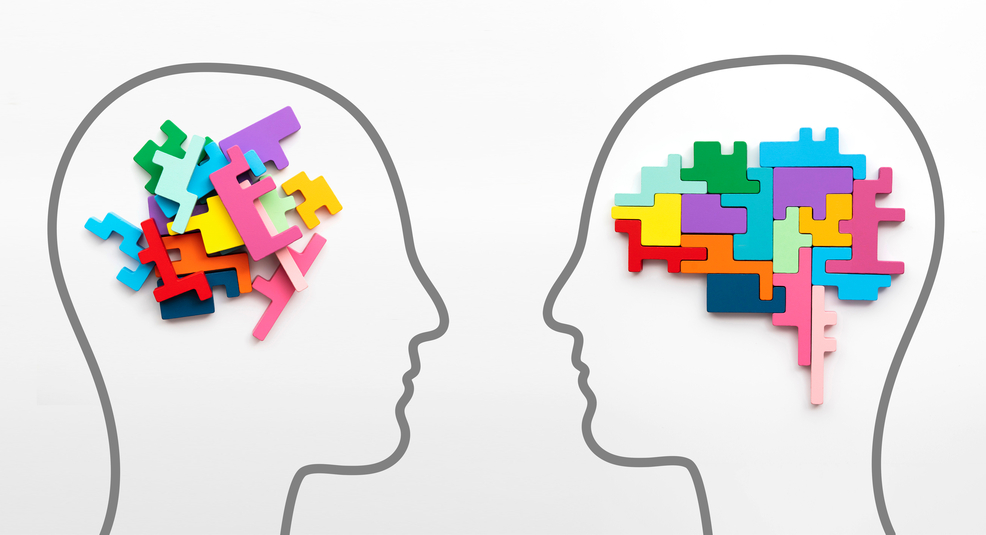Therapy & Research
Research Findings & Contraindications
Studies from as far back as the 50s have demonstrated the positive and lasting psychological and spiritual effects of psychedelics. According to the 2017 Global Drug Survey which polled more than 250,000 people in 50 countries, psilocybin has proven to be the safest psychoactive drug one could take, even safer than cannabis.
Hundreds of anecdotal reports, epidemiological studies, and decades of psychoanalysis show that psilocybin is an incredibly effective treatment for cluster headaches, addiction, and mood disorders. It also increases quality of life in cancer patients with severe depression and end-of-life anxiety.

Cluster headaches are extremely painful and disruptive migraines that can occur several times a day for weeks or months followed by a period without headaches. When taken at a sub-perceptual dose, psilocybin can abort attacks, terminate a cycle, or extend the sufferer’s remission period, proving to be an effective remedy for those who are treatment-resistant to a physical ailment. Clusterbusters, a non-profit that supports psilocybin treatment for cluster headaches, is one of the most supported organizations for research and education regarding this condition. They provide members with resource materials, inform them of new research surrounding cluster headaches, and encourage them to participate in and help fund research into the treatment and cure of cluster headaches with psilocybin. Clusterbusters also provides patient forums for anecdotal reports and access to care.
In a 2014 study, researchers found that psilocybin can effectively help treat tobacco addiction. The open-label pilot study administered moderate and high doses of psilocybin to 15 participants in conjunction with a 15-week smoking cessation treatment plan. Both biomarkers and self-report measurements demonstrated that 80% of participants remained abstinent from smoking at the 6-month follow-up— traditional smoking cessation therapies have about a 35% success rate.

Mood disorders, such as major depressive disorder (MDD) and persistent depressive disorder (dysthymia), have also been successfully treated with psilocybin and LSD. A systematic review of published clinical studies found that 335 out of 423 participants (79%) from 19 different studies showed “clinician-judged improvement” after psychedelic-assisted treatments.
In a randomized double-blind study from 2016, 51 terminally ill cancer patients who were diagnosed with end-of-life depression and/or anxiety were administered very low and very high doses of psilocybin 5 weeks apart. The results demonstrated that a high dose of psilocybin produces significantly lower measurements of depression and anxiety and increased optimism and quality of life. These results were sustained at the 6-month follow-up, with about 80% of patients continuing to show significant decreases in depression and anxiety.

Although psychedelic research has made a recent comeback, a bevy of online sources have been collecting anecdotal reports since the much darker and furtive ages. Erowid, for example, holds the biggest vault of trip reports and detailed drug profiles for all substances. Shroomery, another online resource, serves as a forum that concerns everything about hallucinogenic mushrooms. These online sources, which have been around since the 1990s, are particularly important because they provide a safe space for all to share their experiences, harm reduction practices, and educational resources.
As with any substance, however, there are some things we have yet to learn from studies. One primary concern scientists have is the impact psychedelics can have on those with a family history of mental illness or latent conditions such as schizophrenia or suicidal depression. Many scientists believe that psychedelics may trigger these mental health issues and advise against using them recreationally until further research is conducted.

One obscure, though specific, concern is that the activation of 5-HT2B receptors has the possibility of increasing the risk of heart disease. This particularly stems from a study done on fenfluramine, a weight loss drug introduced in the 1990s, that was found to be toxic because it activates the 5-HT2B receptors every day on a continuous regimen.
Generally speaking, there are some long-term effects that are extremely rare, but possible. Hallucinogen-Persisting Perceptive Disorder (HPPD), commonly referred to as “flashbacks,” are unique to psychedelics, most notably LSD. This disorder reportedly can cause perceptual changes, usually visual hallucinations, that can persist for weeks or months after a trip. Researchers are not sure how prevalent HPPD is, but studies suggest that it is not associated with any physical or neurological damage.
Dr. Fadiman’s book, “The Psychedelic Explorer’s Guide,” also explains the science behind the acute and long-term effects from studies conducted over several decades. For instance, chronic or negative effects of psychedelic use, such as HPPD, have been confounded since their inception due to the limited scope of study, rare occurrences, polydrug use of study participants, and other variables muddling causation and correlation to these very odd hallucinatory phenomenon.

Culturally, psilocybin mushrooms have been stigmatized and misconceptualized, leading to their criminalization. However, with recent laws changing, particularly in California, we are learning that the benefits research has demonstrated further prove that the negative stigma that follows psilocybin and other entheogenic substances is far from the truth.
Overall, studies have demonstrated that psilocybin is a relatively harmless natural remedy that can be used to treat a wide variety of conditions. Decriminalization of psilocybin mushrooms in multiple countries around the world further proves that they are a safe and effective substance that should continue to be studied for their therapeutic benefits. As scientists, researchers, and lawmakers continue to welcome and embrace psilocybin, we can expect to see a major paradigm shift brought about through irrefutably conclusive evidence in future research.